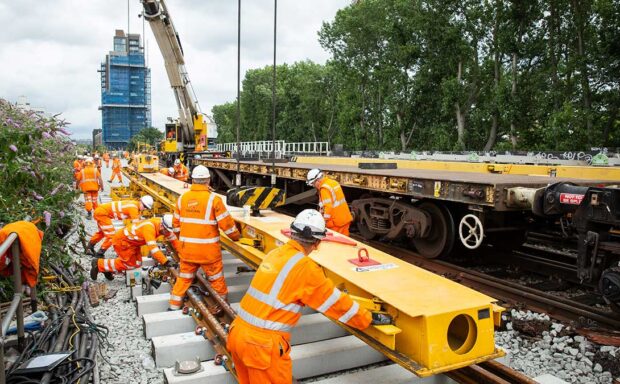We’re committed to running a simpler, better and greener railway, helping more of you travel by train – the cleanest, greenest mode of mass transport.
Slashing carbon emissions
We reduced our carbon emissions by 25% in the past five years and saved 159,400 tonnes of carbon.
We already generate enough solar energy to power 20,000 homes. We use this energy to power our offices, depots, and railway stations in partnership with energy supplier EDF.
We’re on track to source 100% of non-traction energy – that’s the energy used to run our railway that doesn’t involve powering trains – from renewable sources by 2030.
We’re also committed to helping move more goods off the road and onto the tracks. We’re working hard to meet the Government target of increasing rail freight by 75% by 2050.
Rail freight reduces emissions and helps deliver cleaner air for you by removing hundreds of thousands of cars and lorries from the roads every year. This also improves road safety, lowers congestion, and improves biodiversity.
Case study: Royston upgrades go zero-emission
In October 2023, we completed our first zero-emission worksite at Royston in Cambridgeshire.
We renewed overhead wires in and around Royston station without using any traditional diesel-powered machinery. Instead, the entire site was hybrid-electric, using an 80Kw battery pack to power tools, lighting, vehicles, and welfare facilities. All consumables were recyclable too.
We’re looking to roll this out across our railway, to help us become net zero by 2050.

A greener railway
We’re one of the biggest landowners in Britain, managing 124,000 acres (194 square miles) across England, Scotland, and Wales.
This makes us the proud custodians of rare and varied ecosystems and six million trees.
And we’re supporting the Government’s 25-Year environment plan, part of which aims to increase the tree canopy and woodland cover of England to 16.5% by 2050.
For example, we worked with partners like the Forestry Commission to identify nearly 600,000 hectares of land within a two-kilometre-wide corridor through England to create a woodland in.
We’ve also innovative when it comes to making sure our land is well-managed.
For example, we hired a flock of Boer goats to graze the rare Chalk Grassland habitat between Folkestone and Dover after staff struggled to access the land. This maintains the vegetation naturally whilst encouraging biodiversity.

Case study: beavers under our railway
We reintroduced beavers into the wild in Scotland in 2009 after they had been extinct for over 400 years. And it’s great to have them back – research shows their vital role in enhancing and restoring the delicate ecosystems of the Scottish Highlands.
But we had to make some changes to our railway to help us co-exist peacefully with our furry friends.
We worked with species specialists and ecologists from NatureScot to install a 45-metre pipe under the main line in June 2021. It’s the first underpass for beavers in Britain.
The beavers can now move freely under the railway without disrupting your journeys.

A more resilient railway
We’re also investing in long-term strategies to make our railway more resilient to climate change.
Over the next five years, we’re investing £2.8bn to make sure our railway can cope with more extreme weather events.
We’re recruiting 400 more drainage engineers, building or rebuilding more than 370 miles of drains, strengthening 20,000 cuttings and embankments. We’re also installing smart movement sensors, CCTV, and innovative new technologies – all to keep your journeys moving whatever the weather.




